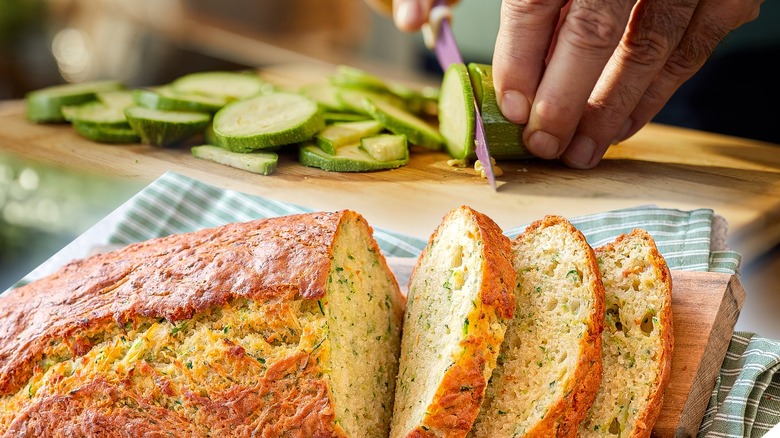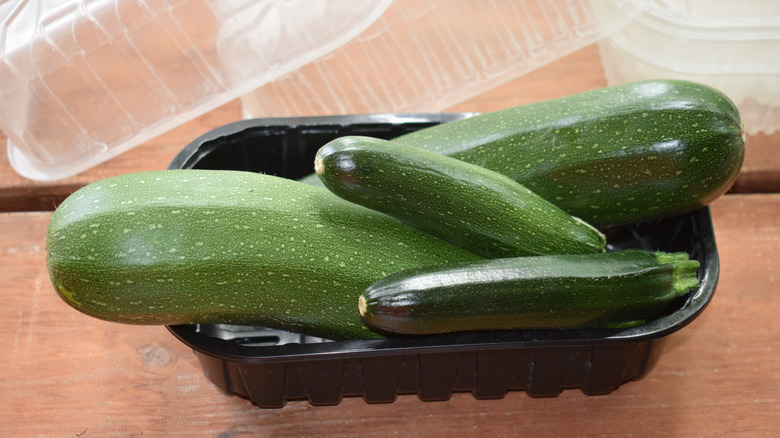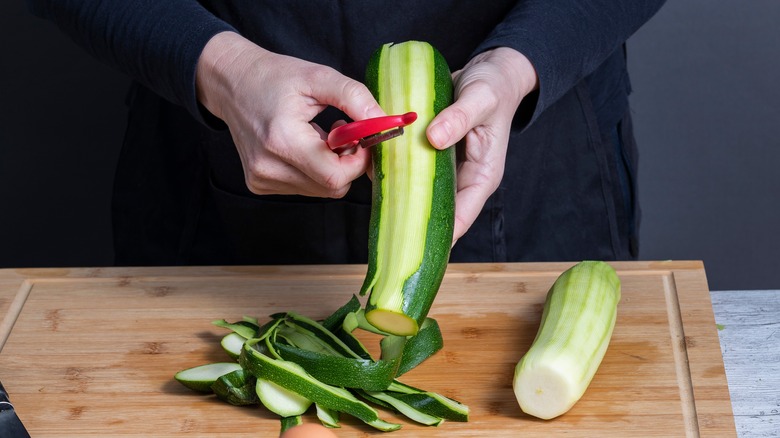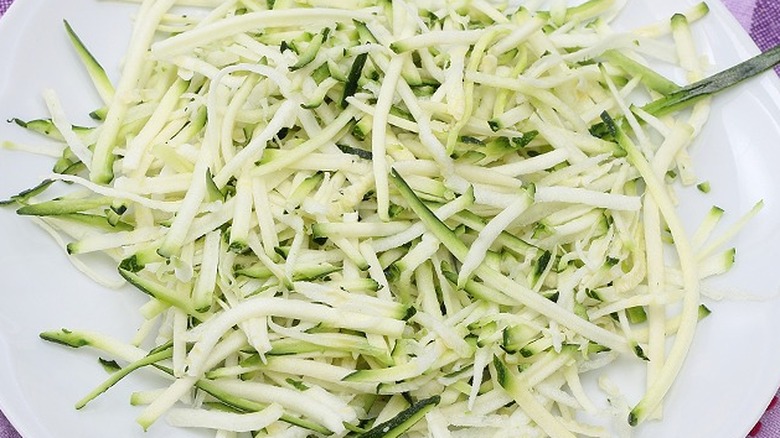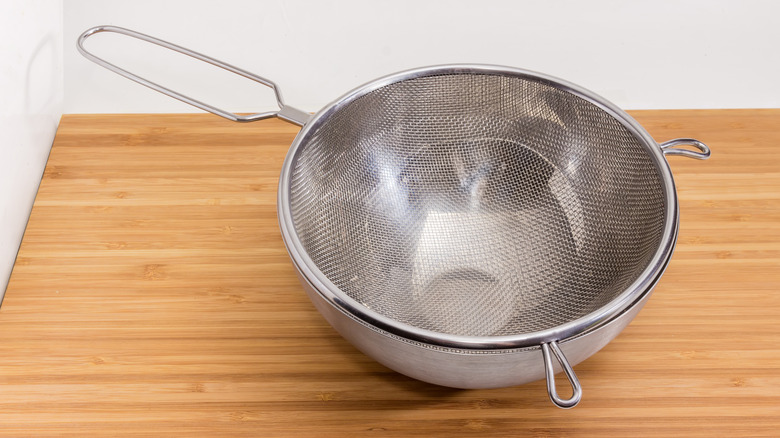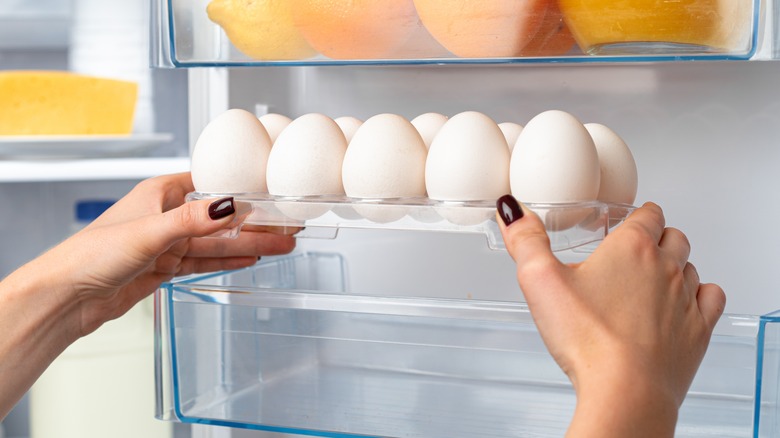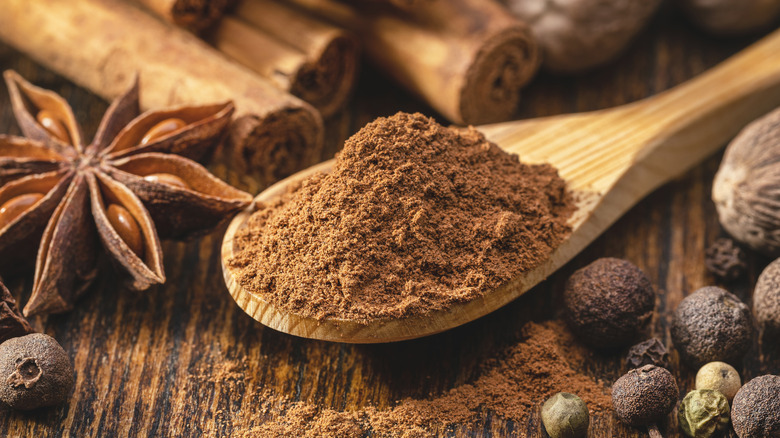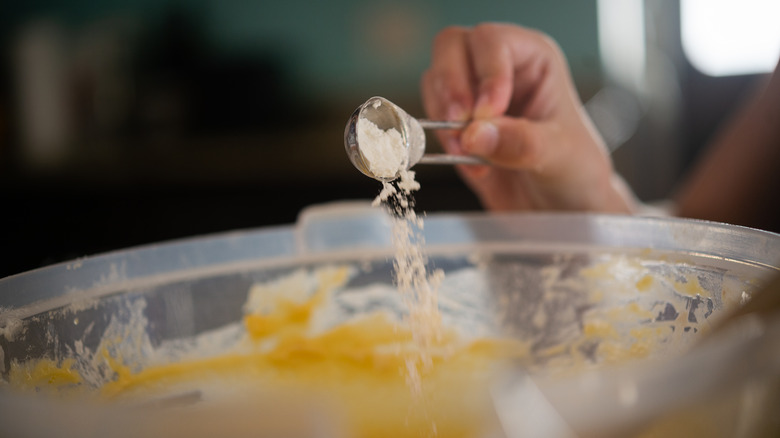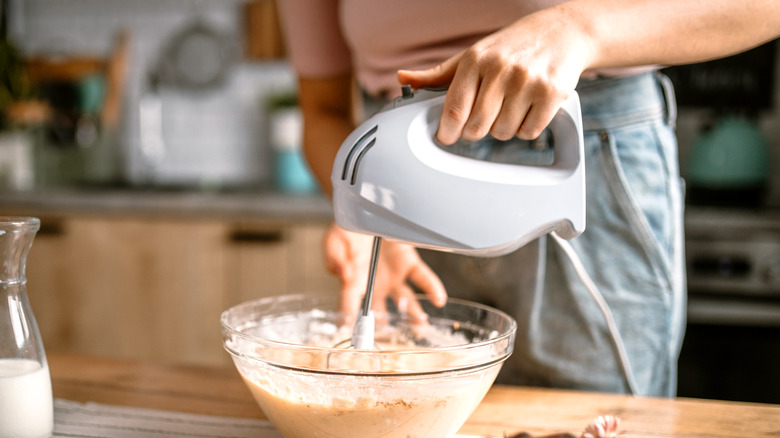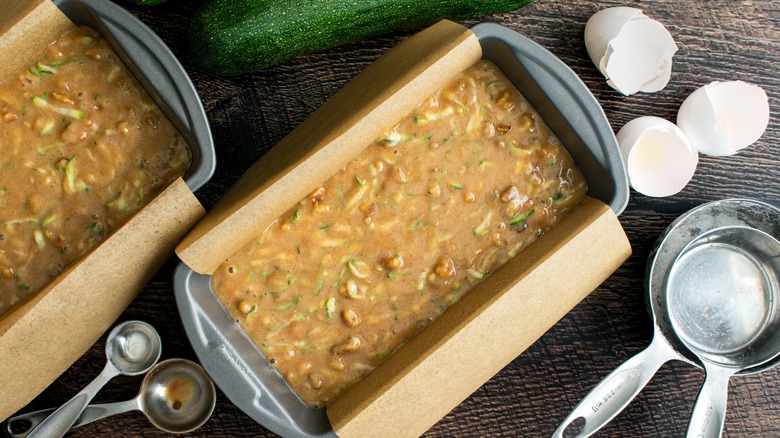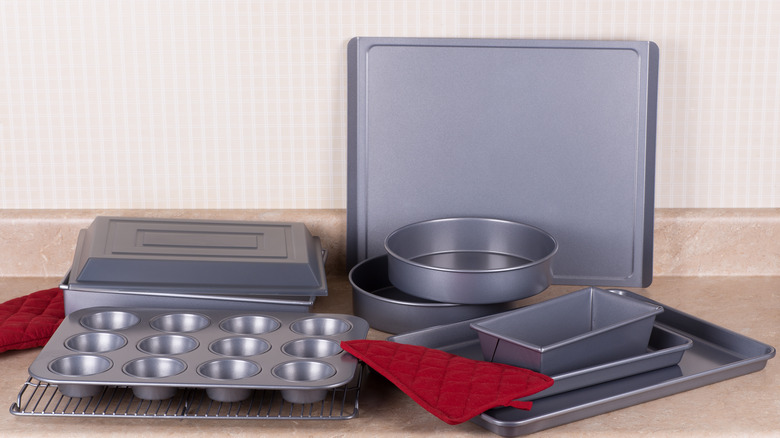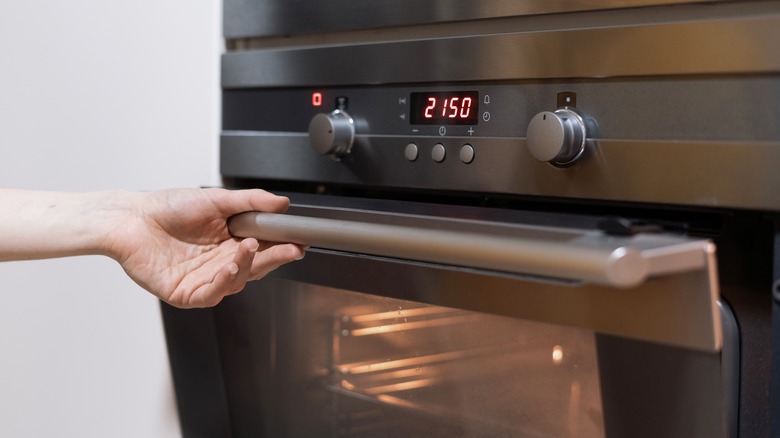12 Mistakes To Avoid For Perfect Zucchini Bread
Zucchini bread is like banana bread's sweet and savory cousin. Like banana bread, zucchini bread is a quick recipe that helps home cooks prevent food waste. Whether you're a gardening professional — or just bought too much at the store — you can transform your leftover squash into a delicious, moist loaf that you can slather with butter or decorate with icing. This lovely bread usually contains oil, sugar, eggs, spices, leavening agents, and flour. As a bonus, the zucchini provides nutritional value.
You might think that there's no way to mess up this type of quick bread, but that's not necessarily true. When you make zucchini bread, there is always the possibility of things going wrong. If this happens, your baked good can end up soggy or tasteless. Don't be alarmed, though. These mistakes are as easy to avoid as they are to make. Once you know the ins and outs of zucchini bread, your treat is nearly guaranteed to turn out glorious.
1. Choosing the wrong kind of zucchini
You must choose the right type of zucchini to ensure the success of your quick bread. Picking one with less-than-ideal features will drastically impact your final product. It's vital to select the vegetables before they grow too large — which is easy when you get them from the grocery store — but a little trickier if you are getting the zucchini from your garden. This is because you'll need to keep an eye on the vegetables to see when they're ready to be picked.
When they are larger, zucchinis tend to contain more water, which leads to excess moisture in the batter. Additionally, larger zucchinis don't taste as good, with a more bitter flavor. They can also have larger seeds. These large seeds can throw off the texture of your zucchini bread. With small zucchinis, the tiny seeds aren't an issue. You can include them in the batter.
Additionally, you shouldn't use squash that has bruises or blemishes. Unlike the bananas you use for banana bread, the appearance of zucchini matters — you won't be mashing up the food as you would bananas for banana bread.
2. Peeling the zucchini
One of the mistakes you can make with summer squash, such as zucchini, is peeling it when it doesn't need to be peeled. Maybe peeling certain vegetables is second nature for you, or you may assume that zucchini's skin is inedible. However, it's not. You don't want to peel zucchini.
By removing the peel, you lose nutritional value. According to Healthline, the skin contains most of the vegetable's antioxidants. Specifically, it has impressive amounts of carotenoids, which are good for your eyes, skin, and heart.
Additionally, the skin adds charm to your baked good. The exterior of the vegetable is a much darker green color than the interior, so it adds color to your loaf, which gives the baked good its signature speckled look. The zucchini skin is also tougher, which adds a pleasant textural contrast. Make your zucchini bread taste and look better by leaving the skin intact. Just make sure to rinse the vegetable before you use it.
3. Cutting zucchini pieces that are too big
Whatever you do, try not to cut the zucchini by hand, as it's extremely difficult to get into the right-sized portions. If you chop it into pieces that are too big, you risk having a quick bread with large vegetable chunks in it. These large pieces will overpower your dessert, throwing the sweet and savory balance off. Chunky pieces are also hard to distribute throughout your batter, making it hard for the zucchini's moisture to disperse evenly.
When you have thin shreds, your zucchini pieces will effortlessly blend with spices, sugars, and other components. If you have no choice but to manually chop them, take your time to cut very thin pieces. You need them to be smaller than a julienne cut (strips that are approximately 2 to 3 inches long and 1/8 inch thick).
Using a box grater or a food processor might be easier. First, cut off the ends of the vegetable. When using a box grater, simply press the zucchini against the tool, then slide it up and down against the box to create thin strands. You can even experiment with different sides of the grater to get the exact size you want. With a food processor, you need a grating attachment. Press the vegetable into the opening using some slight pressure, then let the processor do the chopping for you.
4. Neglecting to draw out the vegetable's excess moisture
While you certainly want the zucchini to provide some moisture to the baked good, it can become a disaster if you have too much. Excess moisture can make the recipe unbalanced.
This is especially important to remember when working with larger zucchinis. If you grate them and toss them directly into the batter, the water can cause the bread to have difficulty cooking, which can create a mushy texture — no matter how long you keep it in the oven.
To avoid this mishap, drain excess liquid from the vegetable. For one possible method, grab a handful of zucchini shreds, then gently squeeze out the water with your hand. You can also use a linen cheesecloth to squeeze the strands — this will help prevent the loss of some zucchini pieces. Another method is to place the pieces in a strainer, then allow the liquid to leak out slowly into a bowl beneath it. After you let it rest for a minute, you can gently press on the zucchini with your hands to quicken the process.
5. Inaccurately measuring the zucchini
When you begin your zucchini bread-making adventure, don't be careless about choosing your recipe. Some recipes aren't as successful as others because the instructions are too vague. For instance, if a recipe calls for one or two zucchinis, you might want to not use it. Zucchinis vary in size and shape, and some have more water content than others. Recipes with this amount listed may not be specific enough.
A recipe may also not be precise enough if it calls for volume (such as cups) rather than weight measurements. It is even worse if the recipe doesn't specify packed or unpacked cups, because 1 cup of packed zucchini differs greatly in weight from 1 cup of unpacked zucchini. When you use a kitchen scale, your measurements will be more accurate, creating better-quality baked goods. If you don't already own one, you can easily find one to purchase.
6. Using cold ingredients
Some recipes call for cold ingredients. For example, biscuit recipes require chilled butter chunks to produce the flaky texture of these baked goods. On the other hand, recipes like zucchini bread thrive when you use room-temperature components.
Bringing ingredients to room temperature might seem like a hassle; you must plan ahead and remove the items from the refrigerator before you bake. But this step really does impact how the baked good turns out. When you neglect to bring your items to room temperature, it makes it harder for the ingredients to blend into a silky mixture, and you have to spend extra time to achieve the right consistency. Using cold ingredients can also cause the bread to turn out too dense, throwing off the loaf's whole texture.
Eggs are the most important ingredient to bring to room temperature, as they are used in most quick bread recipes. You can submerge them in lukewarm water to try and bring them up to temperature faster. If your recipe requires milk or butter, you'll need to let these warm up as well. Ultimately, it's best to delay the project until everything has warmed up.
7. Not using any spices
Zucchini bread is a heavenly balance of sweet and savory flavors. Warm spices are a key part of this balance. The role of spices in zucchini bread is similar to the role of spices in carrot cake. In both recipes, the seasonings counteract and complement the stringy vegetables in the mixture. When you make zucchini bread without any spices, the vegetal qualities of the zucchini can overpower the sweet components.
Some of the most common spices to use to make zucchini bread are cinnamon, ginger, and nutmeg. But some recipes also call for ingredients like allspice, cardamom, or cloves, too. If you realize that you're not completely stocked up on each spice, that's okay, but try to make up for it with another spice. For instance, it's not the end of the world if you're out of nutmeg, but just add an extra dash of cinnamon in its place, so the bread has plenty of comforting autumnal flavors.
8. Using expired leavening agents
Quick breads are called so because they don't require yeast. As such, they are quick to whip up and bake. Since you don't have to wait around for the batter to rise, you need something else to make them lift, which is where leavening agents like baking powder or baking soda come into play. You need to incorporate these products into the batter. If you don't, you'll end up with extremely flat and heavy bread. Additionally, you need to avoid using old leavening agents, because they're ineffective.
You can technically use expired baking powder because it isn't dangerous to ingest. However, it won't work like it used to. Before you begin to measure your ingredients, look at the bottom of your baking powder or baking soda container to ensure that the expiration date hasn't passed. If it has passed — but not too much time has passed — the ingredient still might work. However, if it's months old, your best bet is to buy a fresh container. Otherwise, you'll spend time, effort, and other ingredients, but your resulting zucchini bread will be unpleasant.
9. Overmixing the batter
If you compare yeast bread with quick bread, you'll find that the two types of baked goods have different consistencies. Sourdough bread tends to have a springy, slightly chewy texture. However, zucchini bread should be soft and almost cake-like in texture. This means you can't disturb the gluten in the flour too much — which usually happens through over-mixing. When you mix the batter for an unreasonable amount of time, the baked good is tough when you remove it from the oven.
Furthermore, when you stir the batter for too long, you accidentally incorporate air into it. You might think air is good because it makes the bread lighter, right? Not too fast. Air is fantastic when you make whipped cream or fluffy frosting, but you don't want an excessive amount in your quick bread batter. If you have too much air in your zucchini bread, it will expand in the center when it bakes, then it collapses in on itself afterward.
10. Not smoothing the top of the batter in the pan
When you pour your zucchini bread batter into a pan, it doesn't always pour evenly — especially if your mixture is thick. If you fail to uniformly spread the batter out, the quick bread will bake unevenly. As a result, it can come out lopsided. If one side of the loaf is higher than the other, it might take longer to bake than the other side.
Sometimes, the center can be higher than the edges. If this happens it's actually worse, because it already takes longer for the center to cook, let alone when there's excess batter there. Overall, it's best if you use a spoon or offset spatula to make the top of your zucchini bread batter level inside the pan. Just make sure not to apply too much pressure by pressing it down, because that affects the baked good's ability to rise. You can also gently shake the bakeware to distribute the batter.
11. Using the wrong type of pan
There is a reason why there are so many different pans in the baking world: they each serve a specific purpose. With a zucchini bread batter, you can't just dump it into any pan. This quick bread needs certain dimensions to rise properly. Don't pour it into a large pan, such as a Bundt pan or round container.
Additionally, some zucchini bread recipes take over an hour to bake. This length of time works best with certain pans. Aluminum loaf pans are the best because they help create consistent browning throughout the baked good, allowing your zucchini bread to bake evenly. However, not all aluminum loaf pans are the same size. Check your recipe to ensure your pan has the correct dimensions.
If you don't, you risk the dough spilling over the edges and onto the bottom oven when you bake it. Another possible outcome is that the center of the dessert doesn't bake through. As long as you use the bakeware size that the recipe recommends, all is well, and if you happen to have extra batter, bake it into muffins because the smaller portions are guaranteed to bake through and puff up.
12. Taking too long to put it in the oven
Since you use leavening agents to make quick breads such as zucchini loaves, it is always a good idea to know how to make the most of them. Some recipes require baking soda or baking powder. On the other hand, some require both simultaneously.
Often, baking powder is double-acting, so it activates once when you mix it with a liquid and again when you put it in a warm environment. This is pretty convenient because it ensures a slow but steady rise of the baked good. However, baking soda doesn't work this way. It begins to work immediately when it touches an acidic component, which means you can't waste any precious time once you have your batter done.
If you wait too long to transfer your baked good to the hot oven, it doesn't come out as it should, because the leavening agent diminishes with time. Furthermore, if you use single-acting baking powder, you'll have the same issue as with your baking soda — you'll be working against the clock to get your loaf into the oven after mixing your batter. As a fair warning, don't skip the step of prepping your pans — this will only slow you down. When the batter is done, pour it into the baking tin and pop it in the oven to have the best zucchini bread possible.
